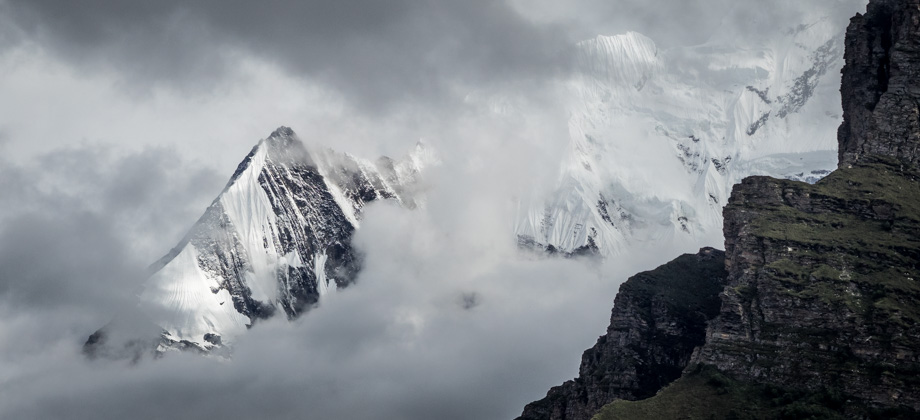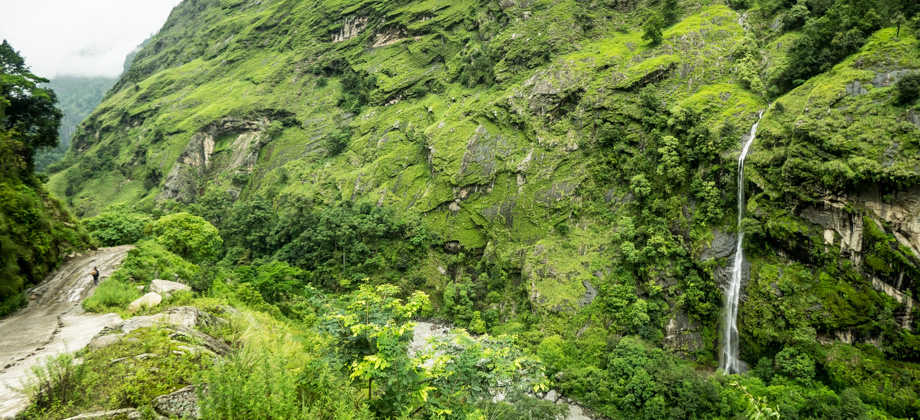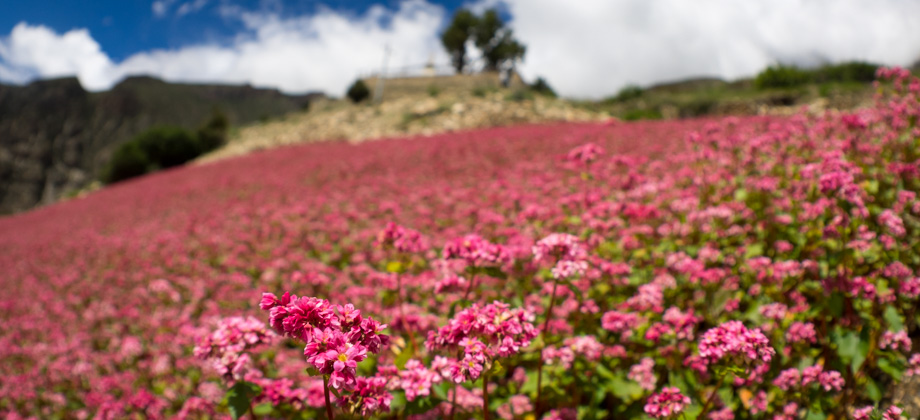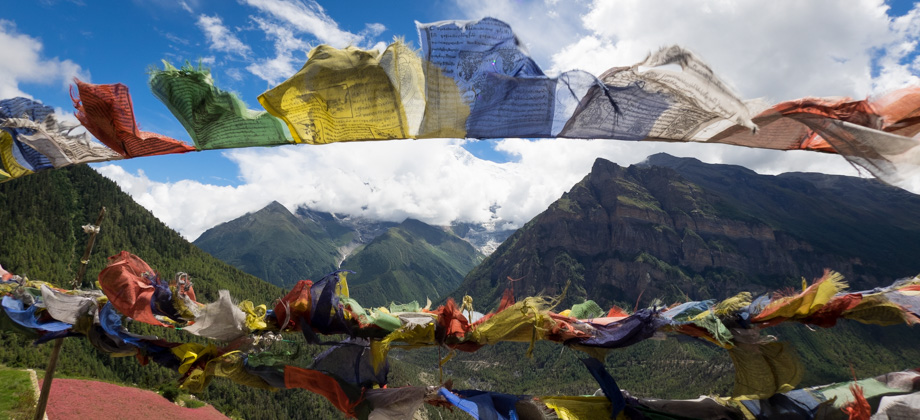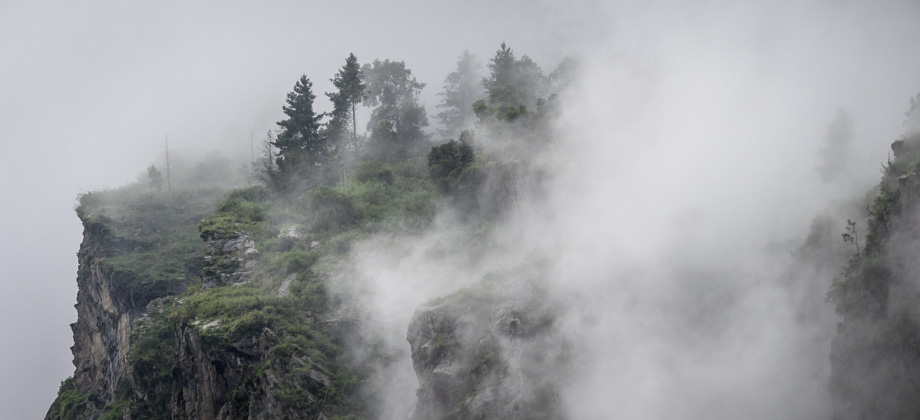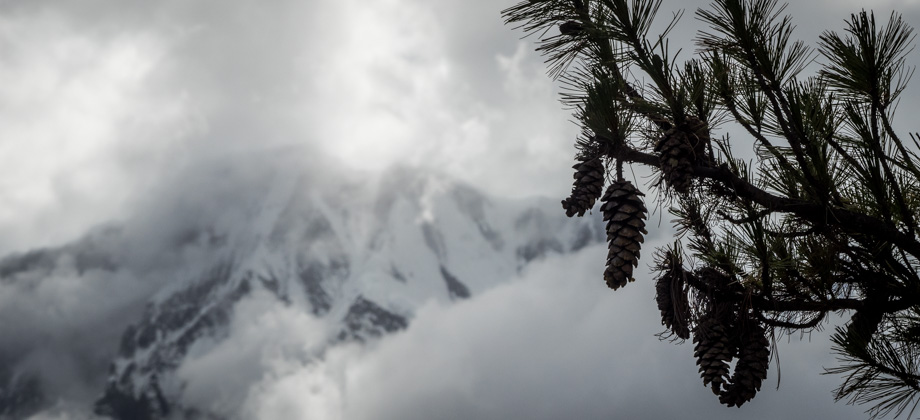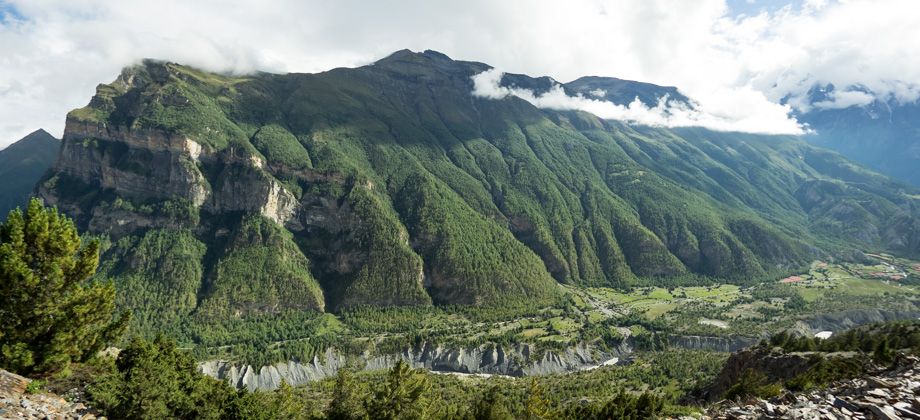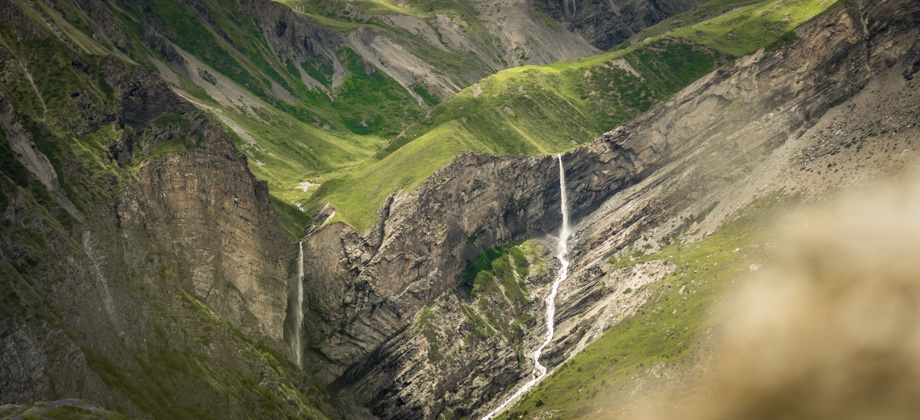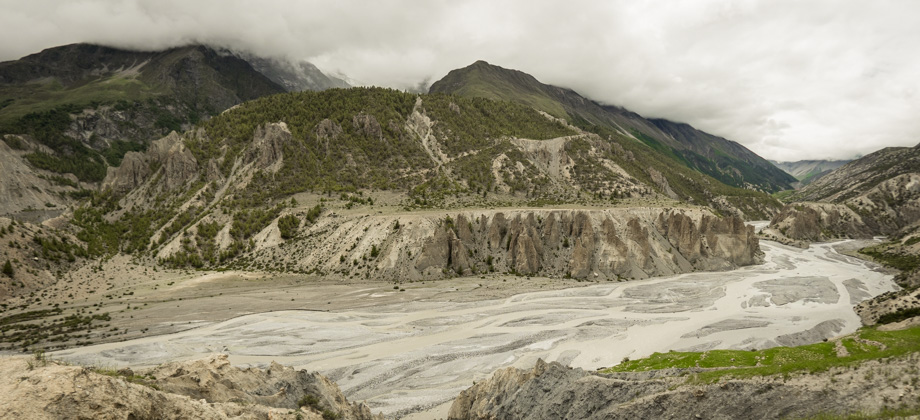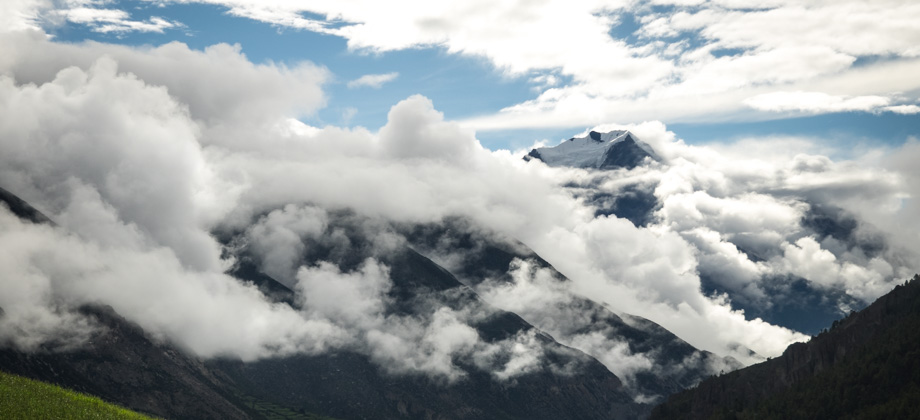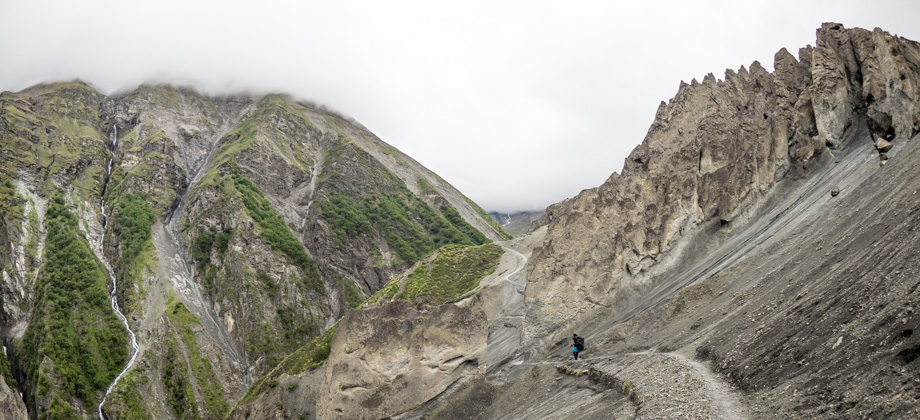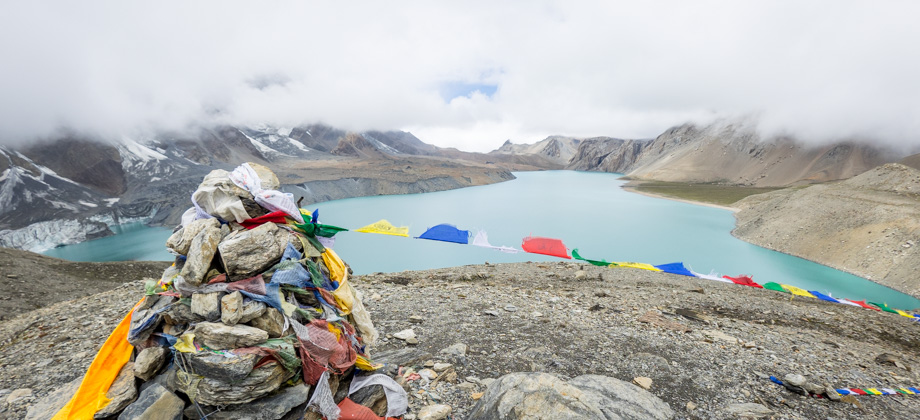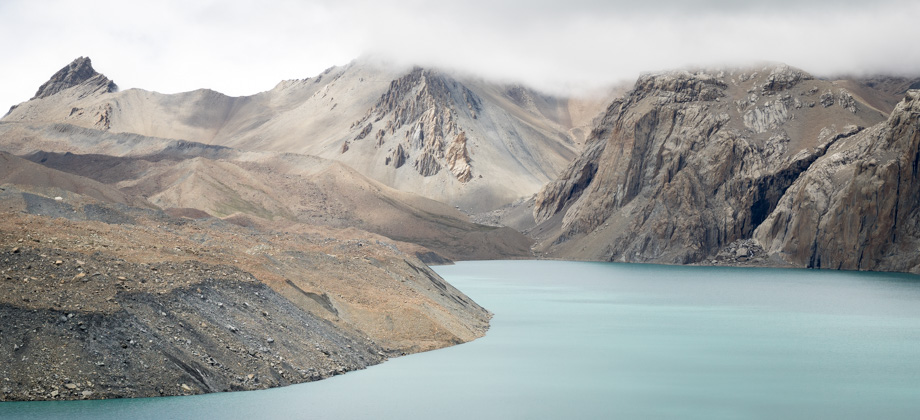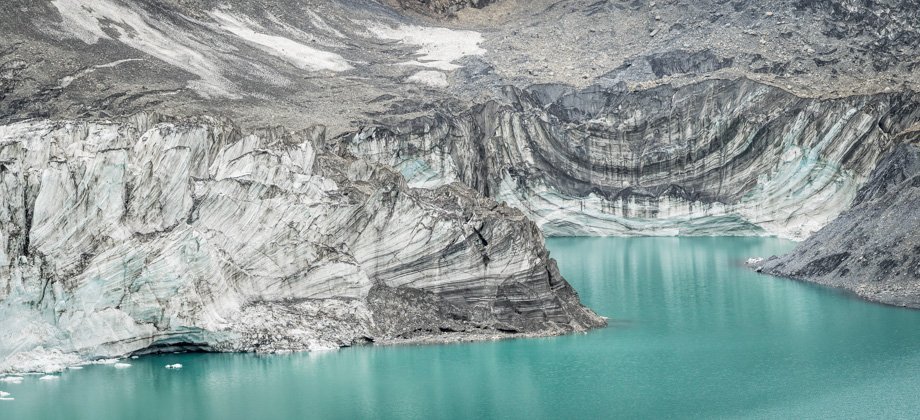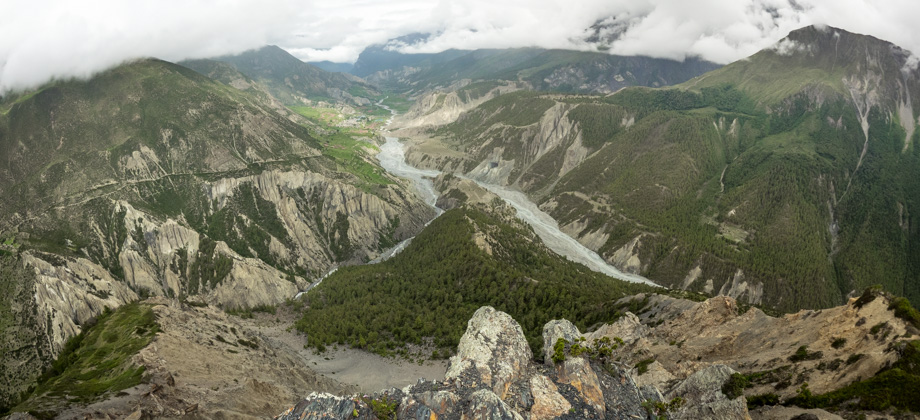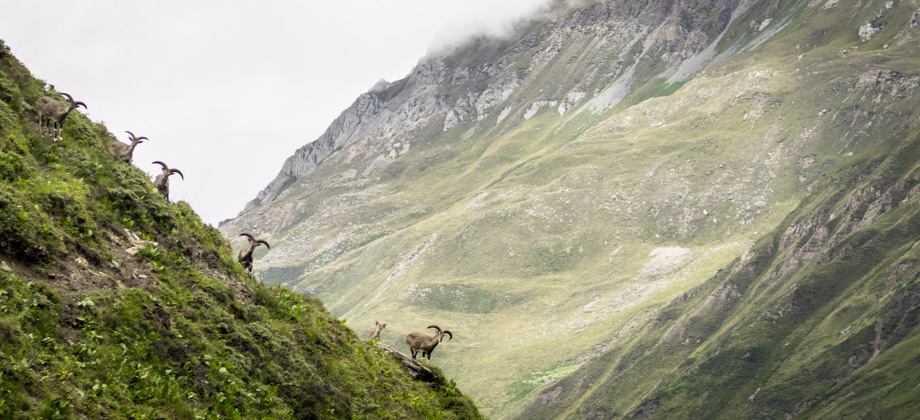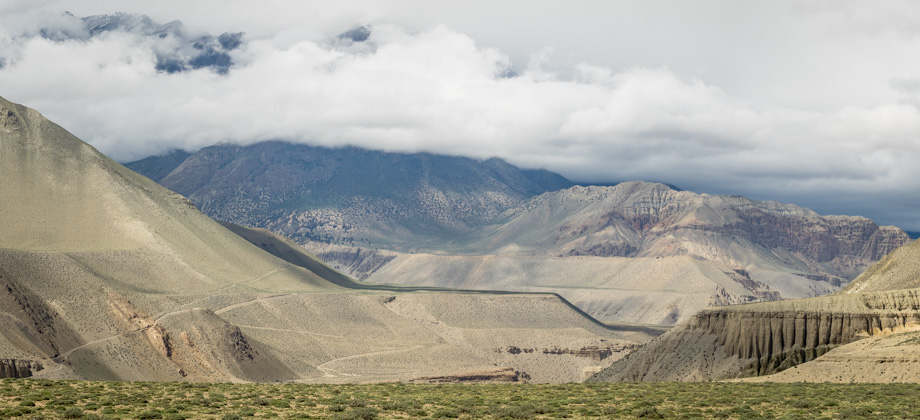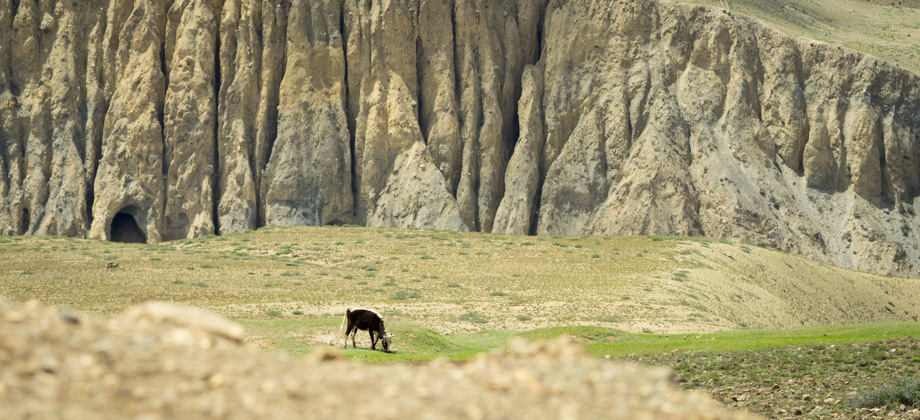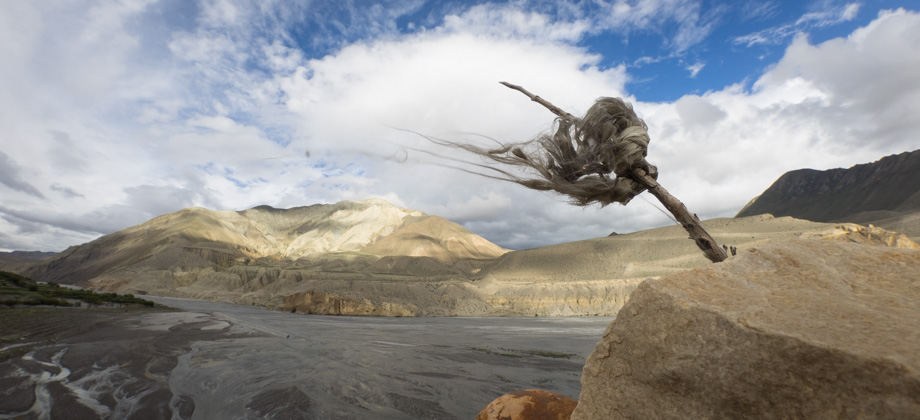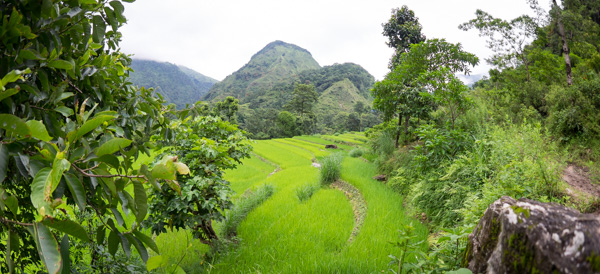Annapurna Circuit
Bus to Besisahar
We woke up at the crack of dawn and began the 20-minute walk north to Naya Bus Park ![]() . We walked at a fairly relaxed pace and arrived well before 07:00. The rows of ticketing counters were located in the central building, but to our dismay, we discovered that there were no direct buses to Bhulbhule
. We walked at a fairly relaxed pace and arrived well before 07:00. The rows of ticketing counters were located in the central building, but to our dismay, we discovered that there were no direct buses to Bhulbhule ![]() (elevation : 840 m) and would have to make a switch at Besisahar
(elevation : 840 m) and would have to make a switch at Besisahar ![]() (elevation : 760 m). The bus was a little small and fairly packed, but for such a long journey, it was well-worth the price of just NPR360. Just before setting off, we were surprised when the bus touts told us that we would have to pay another NPR200 just to store each backpack on the roof! We were only able to fit just one backpack under our legs, so just had to comply. I climbed up on the roof with the two boys (I am very sure they were just teenagers), and had to resort to supervising them after seeing their rather inept way of placing the backpack. They secured the bag with clove hitches and two slipknots which I was fairly happy with, but I had to spend a few minutes convincing them that a tarp to cover the bag was indeed necessary. It was monsoon season after all. I only paid them the money after I was completely satisfied, and the bus departed soon after, at 07:25.
(elevation : 760 m). The bus was a little small and fairly packed, but for such a long journey, it was well-worth the price of just NPR360. Just before setting off, we were surprised when the bus touts told us that we would have to pay another NPR200 just to store each backpack on the roof! We were only able to fit just one backpack under our legs, so just had to comply. I climbed up on the roof with the two boys (I am very sure they were just teenagers), and had to resort to supervising them after seeing their rather inept way of placing the backpack. They secured the bag with clove hitches and two slipknots which I was fairly happy with, but I had to spend a few minutes convincing them that a tarp to cover the bag was indeed necessary. It was monsoon season after all. I only paid them the money after I was completely satisfied, and the bus departed soon after, at 07:25.
Getting There
Naya Bus Park lies just north of Thamel at the corner where the Ring Road swerves southward. From Hotel Rising Home, you just need to walk north-west until you reach the road (Parijat Sadak Road) that runs parallel to the Bishnumati River. Turning right here and following the road north will bring you directly to Naya Bus Park. The walk should take you about 20 minutes.
The eight hour-long journey left me completely drained and exhausted, far more than a tough hike ever would have. The road was bumpy and narrow, and the ceaseless swerving and the constant blaring of Hindi music was a complete assault to my senses. The 170-kilometre journey followed roads that ran parallel to rivers for almost the entire way, except for the first 50 kilometres or so. The first major river that we encountered was the Trishuli River, which begins its long journey from the border of China and Nepal north of Kathmandu, and drains the Langtang massif. 60 kilometres further on, we reached the confluence of the Trishuli River and the mighty Marsyangdi River, the latter of which we would follow for the rest of the journey. Just south of this confluence is the Seti Gandaki River which runs from Pokhara, and not too long after that, the confluence of the Kali Gandaki River which drains the Dhaulagiri and Annapurna massifs to the west of the Annapurna Circuit, as well as the Annapurna Sanctuary ![]() via the Modi Khola River.
via the Modi Khola River.
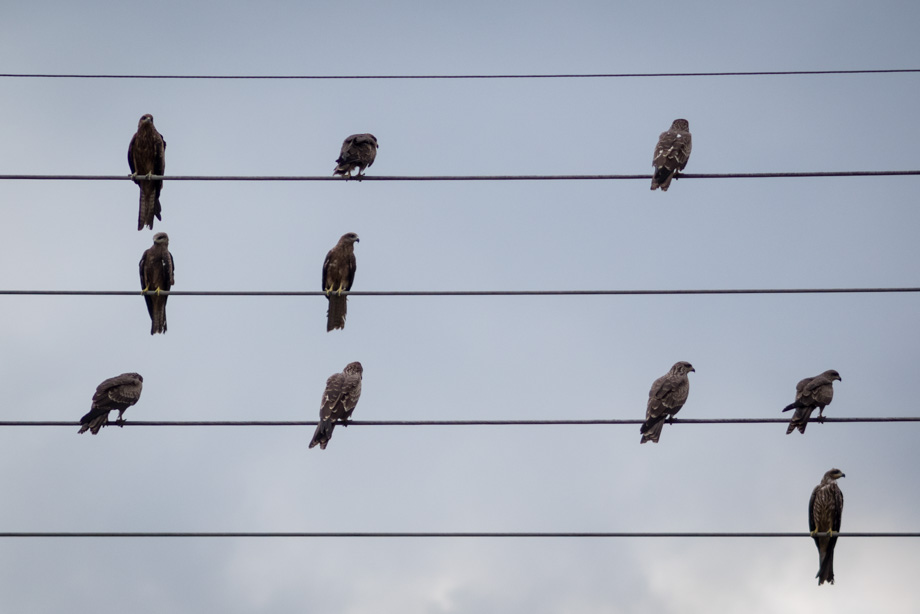
areas such as Kathmandu. These bird of prey are opportunistic hunters and have even
been known to swoop in and snatch food right out of people's hands!
The food outlet that the bus stopped at was much cheaper than the ones that are frequented by the tourist buses. The vegetable khana lunch only cost NPR180 instead of the normal tourist price of around NPR250 or so. We were also entertained by a hilarious conversation amongst a large group of very typical U.S. women who had stopped for a toilet break. They were discussing how one would go about using a squat toilet: 'techniques' such as which direction to face, how low to squat, and how to balance oneself. We were not surprised in the slightest that they were from 'Good ol' U.S of A'.
After lunch, the bus continued to follow the river which swerved north at Bandipur, and departed from the main road that continued west on its way to Pokhara. The bus passed lush green forests that covered the hills and vast swaths of vibrant green paddy fields (Oryza sativa). The plants on the sides of the road would otherwise have been the same vibrant green if not for the dulling of the dust. We finally reached the sprawling town of Besisahar ![]() (elevation : 760 m) at 15:45, after stopping for countless times and unloading a bewildering array of items: massive tyres, boxes of coffee whitener, bed frames, and sacks of vegetables.
(elevation : 760 m) at 15:45, after stopping for countless times and unloading a bewildering array of items: massive tyres, boxes of coffee whitener, bed frames, and sacks of vegetables.
The bus to Bhulbhule ![]() departed at 16:30 from the side of the main road. The journey was bumpy to say the least, and was akin to an off-road journey that is usually only managed by 4WD vehicles. At least the short but frequent stops to pick up and drop off passengers provided us with some respite. The bus stopped at Khudi (elevation : 790 m), which was the location of the trail head for the alternative trail to Siurung, where we met a loquacious and very friendly man called Rupesh. After talking for a while, we found out that Rupesh owned a small home-stay called 'Hotel Hilton'
departed at 16:30 from the side of the main road. The journey was bumpy to say the least, and was akin to an off-road journey that is usually only managed by 4WD vehicles. At least the short but frequent stops to pick up and drop off passengers provided us with some respite. The bus stopped at Khudi (elevation : 790 m), which was the location of the trail head for the alternative trail to Siurung, where we met a loquacious and very friendly man called Rupesh. After talking for a while, we found out that Rupesh owned a small home-stay called 'Hotel Hilton' ![]() (Telephone: 9819145439) up in Ngadi (elevation : 930 m), which was the last stop for the bus and where we planned to disembark.
(Telephone: 9819145439) up in Ngadi (elevation : 930 m), which was the last stop for the bus and where we planned to disembark.
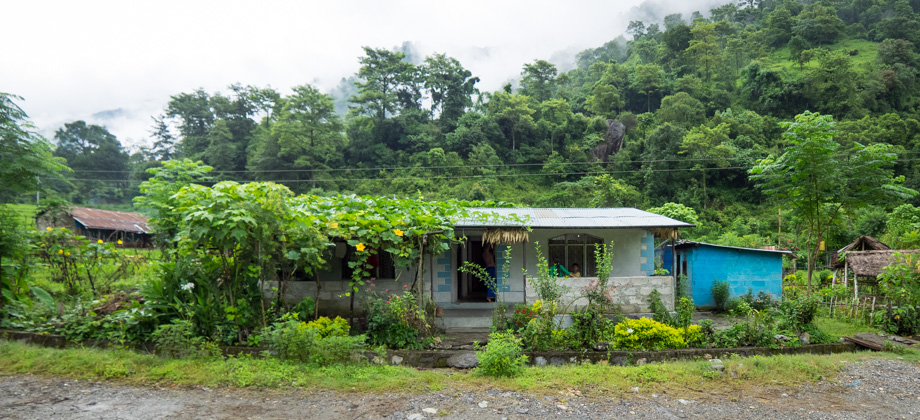
Needless to say, we ended up following Rupesh back. He and his small family were so amiable that we did not even bother trying to negotiate the price of the room (NPR400/2). His place was rather basic, but still offered free charging points, WiFi, and cold showers, which was a luxury compared to what you are likely to encounter in the Sagarmatha region, and I enjoyed the dinner of vegetable curry (NPR380/2) and dhal bhat (NPR400/2).

